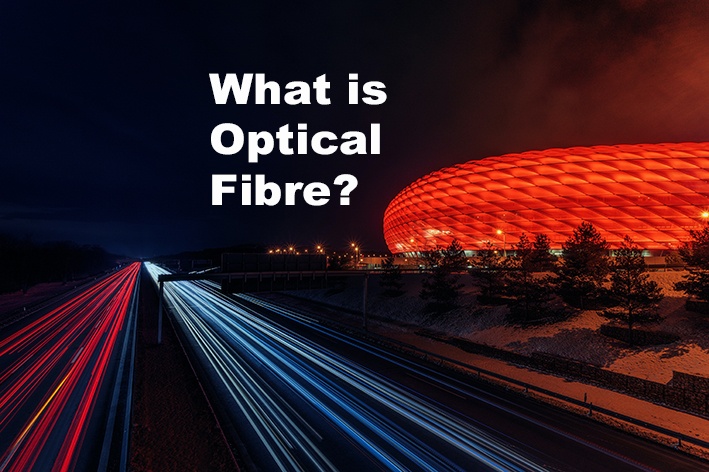In today’s interconnected world, communication plays a vital role in our daily lives. One technology that enables high-speed data transmission over long distances is optical fibre. In this article, we’ll unravel the mysteries of optical fibre, understanding what it is, how it works, its applications, and dispel any confusion regarding its relationship with Wi-Fi.
What is Optical fibre in Simple Words?
Optical fibre refers to a thin, flexible, and transparent strand of glass or plastic that acts as a conduit for transmitting information in the form of light pulses. It functions like a digital highway, carrying vast amounts of data across long distances at incredible speeds.
What is Optical fibre and How Does It Work?
Optical fibre operates on the principle of total internal reflection. The core, which is the central part of the fibre, is surrounded by a cladding layer with a lower refractive index. When light enters the core at a specific angle, it reflects off the cladding surfaces, bouncing back and forth within the core due to this phenomenon. This bouncing of light ensures that the signal remains confined within the fibre, allowing it to travel long distances with minimal loss or degradation.
What is Optical fibre Used For?
Optical fibre has revolutionised telecommunications and has numerous applications in various fields. Here are some common uses of optical fibre:
1. Internet Connectivity: Optical fibre forms the backbone of high-speed internet connections, enabling faster downloads, streaming, and seamless browsing experiences.
2. Telecommunications: Optical fibre is widely used in telephone networks, providing clearer voice signals and enabling faster and more reliable communication.
3. Cable Television: Many cable TV providers rely on optical fibre for delivering high-quality video and audio signals to our homes, ensuring a more immersive entertainment experience.
4. Data Centres: Optical fibre is extensively used within data centres to establish high-speed connections between servers, facilitating efficient data storage and retrieval.
5. Medical Field: Optical fibre finds applications in medical imaging, endoscopy, and laser surgery, enabling precise diagnosis and treatment.
Is Wi-Fi an Optical fibre?
No, Wi-Fi and optical fibre are not the same. Wi-Fi, also known as wireless fidelity, utilizes radio waves to establish wireless connections between devices. Optical fibre, on the other hand, is a physical medium that carries light signals over long distances. While Wi-Fi relies on routers and wireless signals, optical fibre requires physical cables to transmit data.
Optical fibre is a remarkable technology that has transformed the way we communicate and connect with the world. Its ability to transmit data at incredible speeds over long distances has made it indispensable in various industries. From powering our internet connections to enhancing telecommunications and enabling advanced medical procedures, optical fibre continues to shape our digital landscape. So, if you’re looking for a fast and reliable means of transmitting data, consider exploring the benefits of optical fibre.
FibreMax, a leading provider, can help you bring the power of fibre to your house or business. Learn more about their services at FibreMax.
Additionally, if you’re interested in fibre services available from NBN, visit NBN.
Feel free to reach out to FibreMax for further information on fibre connections at FibreMax.
Remember, the world of optical fibre is vast and ever-evolving. Embrace this transformative technology and unlock a world of endless possibilities.

